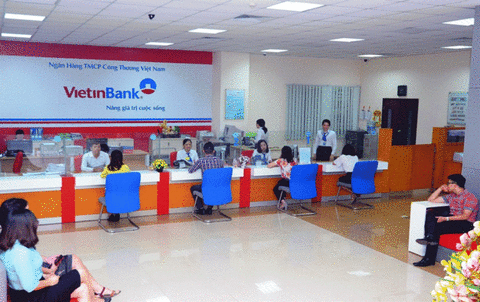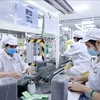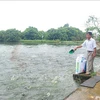Hanoi (VNS/VNA) - Some commercial banks expect to get high credit growth limits set by the central bank this year as they have so far met Basel II’s capital safety and risk management standards ahead of schedule.
According to current regulations, the State Bank of Vietnam (SBV) sets a credit growth limit for the entire year for each bank – depending on its health – to ensure the credit growth target of the entire banking system during the year (14 percent, equivalent to the rate of 2018).
Currently, the SBV has allowed only six banks to apply Basel II standards earlier than its deadline of 2020. They are Vietcombank, VIB, OCB, MBBank, TPBank and VPBank.
At a recent annual general meeting of shareholders, Chairman of VIB Dang Khac Vy said VIB expected the SBV to approve its credit growth limit proposal of 35 percent in 2019 as it was one of the first banks to meet the central bank’s Basel II standards.
MB and TPBank also set high credit growth targets of 20 percent for this year and are waiting for approval from the central bank. As for MBBank, industry insiders forecast the bank could then ask for another extension to increase its credit growth limit to 30 percent this year.
Meanwhile, credit growth targets set at other banks, which haven’t met Basel II standards, are lower.
Nguyen Thanh Toai, deputy general director of ACB, said the bank was assigned a credit growth limit of 13 percent this year, compared with more than 16.4 percent last year.
Techcombank wants credit growth of 13 percent while the figure for Kien Long Bank is 15 percent.
The credit growth limit is even lower at State-owned commercial banks. Vietinbank set a target of only 6-8 percent due to the pressure to raise the minimum capital adequacy ratio (CAR) while Agribank plans to increase outstanding loans by 11-14 percent, of which 60 percent would be agricultural and rural loans.
As lending contributes a large part to banks’ revenue, banks that are granted low credit growth limits but set higher growth targets therefore will have to adjust their operations to meet the growth targets.
Banking expert Nguyen Tri Hieu recommended four main solutions that can help the banks achieve high credit growth and better profits.
First, he said, the banks can re-lend to other banks and credit institutions in the interbank market. It will no longer be limited in terms of growth and will compensate for the restricted lending market.
Another solution is that they can adjust customer groups. Banks can exclude low-profit customers and pay more attention to high-profit ones. Similarly, higher interest sectors, such as consumer loans, should obtain more focus.
They can also reduce capital costs, operating costs such as marketing costs, and other costs to achieve better profit growth.
Finally, banks can boost service activities to increase revenues, compensating for credit growth restrictions.
Pham Thanh Ha, director of the SBV’s Monetary Policy Department, said the credit growth would still be adjusted in accordance with the actual situation and based on the country’s economic growth target of 6.8 percent and inflation of less than 4 percent.
Talking about the credit growth target of 14 percent this year, Hieu said this target is low in comparison to previous years but is consistent with reality. He explained the credit growth target of 14 percent is appropriate as banks need to return to the concern of internal consolidation and capital structure to operate effectively and healthily.-VNS/VNA

























